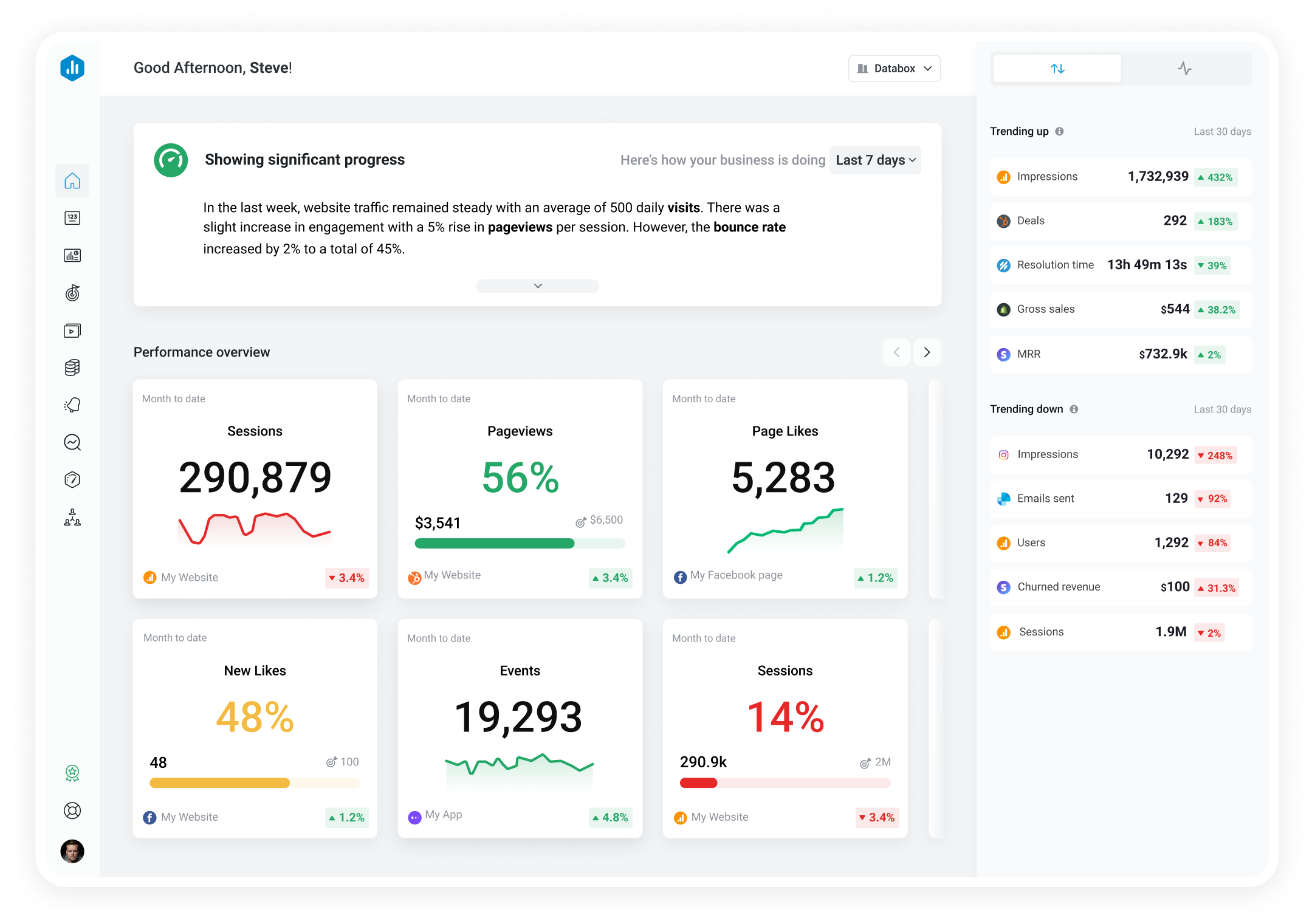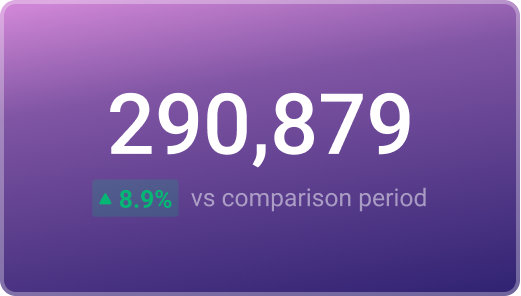Track all of your key business metrics from one screen
GET STARTED
 QuickBooks
Current Assets (Accrual)
QuickBooks
Current Assets (Accrual) Current Assets refer to the resources that are likely to be turned into cash in only one year or less. Examples include cash, inventory, accounts receivable, and prepaid expenses. It is a critical metric for evaluating a company's liquidity and ability to meet short-term obligations.
With Databox you can track all your metrics from various data sources in one place.

Used to show a simple Metric or to draw attention to one key number.
Databox is a business analytics software that allows you to track and visualize your most important metrics from any data source in one centralized platform.
To track Current Assets (Accrual) using Databox, follow these steps:
 Goals
Goals Scorecards
Scorecards Metric Digest
Metric Digest Metric Builder
Metric Builder Data Calculations
Data Calculations Performance Screen
Performance Screen